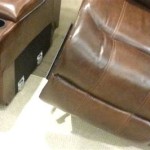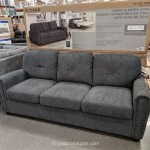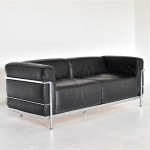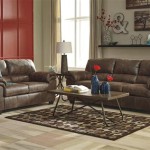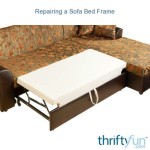What Is A Good Sofa Seat Depth?
Selecting a sofa involves considering various factors, including style, material, and size. One critical dimension often overlooked is seat depth. This measurement significantly impacts comfort and functionality, influencing how a person sits, relaxes, and interacts within the living space. Understanding the ideal seat depth for individual needs is essential for making an informed purchase.
Seat depth, measured from the front edge of the seat cushion to the back cushions, dictates how much space is available for the legs and torso when seated. Too shallow, and legroom becomes cramped, potentially leading to discomfort, especially for taller individuals. Too deep, and a person might find themselves slouching or needing additional cushions for back support. Therefore, striking a balance is crucial.
The seemingly simple measurement of seat depth contributes significantly to the overall comfort and usability of a sofa. It affects posture, ease of getting up and down, and the ability to comfortably lounge for extended periods. Considering the intended use of the sofa and the typical user's body type are important determinants when deciding on an appropriate seat depth.
Understanding Standard Sofa Seat Depth Ranges
Generally, sofa seat depths fall within a range of 20 to 40 inches. Sofas intended primarily for formal sitting typically feature shallower seat depths, often between 20 and 23 inches. This encourages a more upright posture, which is suitable for conversation and social interaction. Sofas used in formal living rooms or waiting areas frequently reflect this design choice.
For sofas designed for relaxation and lounging, deeper seat depths are preferred. These can range from 30 to 40 inches or even more. The extra space allows for individuals to curl up, recline, or even lie down comfortably. Sectional sofas and those marketed specifically as "loungers" often have deeper seats to accommodate these relaxed positions.
A mid-range seat depth, typically between 24 and 29 inches, offers a compromise between formal and relaxed seating. This depth allows for comfortable sitting and some degree of lounging without requiring excessive effort to get up. This range is often considered a versatile option suitable for a variety of users and purposes.
It's important to note that these are general guidelines, and variations exist. Some manufacturers might offer sofas outside these standard ranges. Furthermore, the perceived depth can also be influenced by factors such as cushion firmness and back cushion thickness.
Factors Influencing the Ideal Seat Depth
Several factors influence what constitutes a "good" sofa seat depth for an individual or household. These factors include body type, desired seating posture, intended use of the sofa, and the overall aesthetic of the room. Each element plays a role in determining the most appropriate measurement.
Body type is a significant consideration. Taller individuals generally require deeper seats to ensure adequate leg support and prevent the feeling of being cramped. Shorter individuals may find deep seats uncomfortable, as their feet might not reach the floor, leading to poor posture and back strain. It's always advisable to test a sofa's seat depth, if possible, before making a purchase to ensure a comfortable fit.
Desired seating posture also plays a role. As mentioned earlier, those who prefer a more formal, upright posture will likely find shallower seat depths more suitable. Conversely, those who prioritize relaxation and lounging will benefit from deeper seats that allow for a more reclined position. Consider the activities that will primarily take place on the sofa – reading, watching television, or socializing – and choose a seat depth that complements those activities.
The intended use of the sofa is another important factor. A sofa in a formal living room, designed primarily for receiving guests, might benefit from a shallower seat depth to encourage conversation and maintain a sense of formality. A sofa in a family room or media room, intended for watching movies and relaxing, would ideally have a deeper seat depth to facilitate comfortable lounging.
Finally, the overall aesthetic of the room should be considered. While comfort is paramount, the sofa should also complement the room's design. A very deep sofa might visually overwhelm a small space, while a shallow sofa might look out of place in a large, open-plan living area. Balance the desired seat depth with the overall proportions and style of the room.
Measuring Seat Depth Accurately
Accurate measurement of seat depth is critical when comparing different sofa models or assessing whether an existing sofa is suitable. The measurement should be taken from the front edge of the seat cushion to the point where the back cushions meet the seat. It is essential to measure the usable seat depth, considering the thickness of any back cushions that might reduce the actual sitting space.
Some manufacturers provide seat depth measurements with and without the back cushions. This information is helpful in understanding the true seating space available. When comparing sofas from different manufacturers, ensure that the measurements are taken using the same method to avoid discrepancies.
In situations where a physical measurement is not possible, such as when purchasing online, pay close attention to the product specifications. Look for detailed diagrams or illustrations that clearly indicate how the seat depth was measured. If the information is unclear or unavailable, contact the manufacturer or retailer for clarification.
When evaluating the seat depth of an existing sofa, use a measuring tape or ruler to accurately determine the distance from the front edge of the seat to the back. Account for the thickness of any back cushions to approximate the usable seat depth. This measurement can then be compared to the general guidelines discussed earlier to assess whether the seat depth is appropriate for individual needs.
Ultimately, the ideal sofa seat depth is a subjective matter that depends on individual preferences and requirements. By understanding the standard ranges, considering the factors that influence the ideal depth, and measuring accurately, individuals can make an informed decision and choose a sofa that provides both comfort and functionality for years to come. The right seat depth contributes significantly to the overall satisfaction with a sofa purchase, enhancing the experience of relaxing and interacting within the living space.

Guide To Choose Comfortable Deep Seat Sofas For Your Space Povison Blogs

Sofa Seat Cushions Pick The Perfect Depth Stated Home Blog

The Perfect Sofa Backrest Height Explained By Experts Cozylant

Sofa Secrets How To Choose The Right Seat Depth And Cushions

Sofa Quality Guide What To Consider When A

Sofa Dimensions For 2 3 4 5 6 Person Couches Diagrams Included Home Stratosphere

Best Sofa For Tall People Depth Support Comfort

Sofa Dimensions For 2 3 4 5 6 Person Couches Diagrams Included Home Stratosphere

How To Choose Living Room Seating Sofa Guide Ethan Allen

Serta Copenhagen 73 Rolled Arm Sofa With Removable Covers Tan



